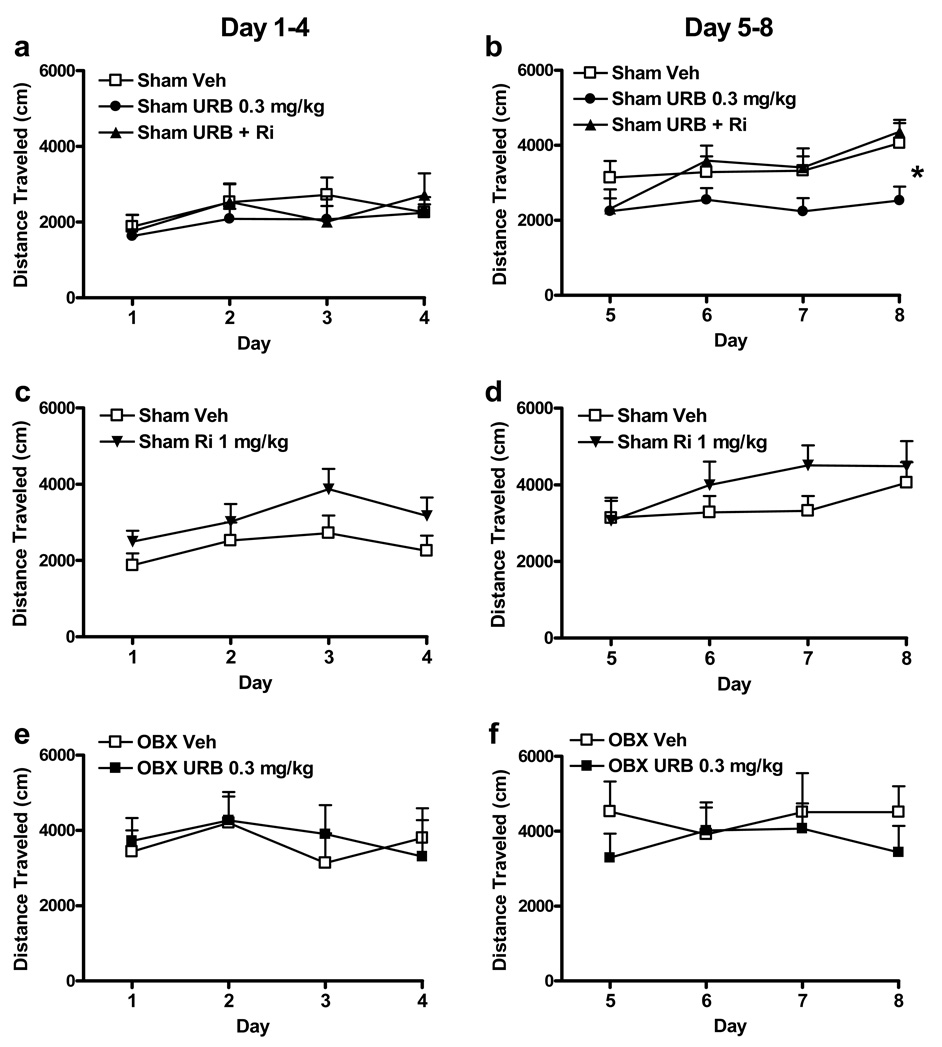Figure 5.
Effects of cannabinoid pharmacological manipulations on amphetamine sensitization in sham-operated and olfactory bulbectomized rats (a) Locomotor responses to amphetamine (1 mg/kg i.p.) are similar in sham animals that received vehicle (i.p.), URB597 (0.3 mg/kg i.p.), or URB597 (0.3 mg/kg i.p.) coadministered with rimonabant (1 mg/kg i.p.) during the first four days of the sensitization protocol. (b) In sham animals, URB597 (0.3 mg/kg i.p.) attenuated amphetamine sensitization relative to vehicle (i.p.) during the last four days of the sensitization protocol (*P < 0.05, ANOVA). This effect was blocked by rimonabant (1 mg/kg i.p.) (P < 0.05 for each comparison, Fisher's PLSD post hoc). Rimonabant (1 mg/kg i.p.) did not affect the development of amphetamine sensitization during either the (c) first four or (d) the last four days of testing. In OBX animals, URB597 did not alter the development of amphetamine sensitization during either the (e) first four or (f) last four days of testing. Data are Mean + SEM.

